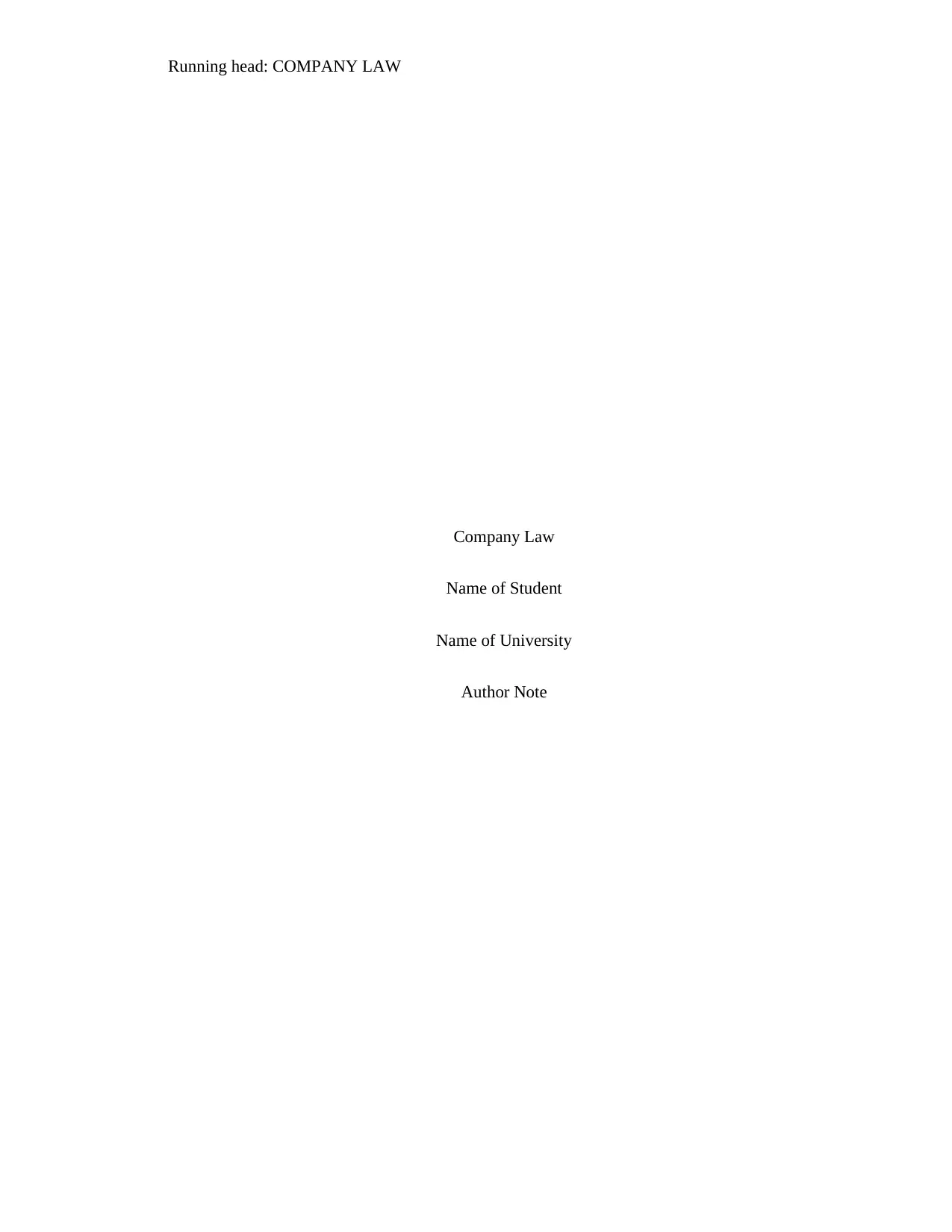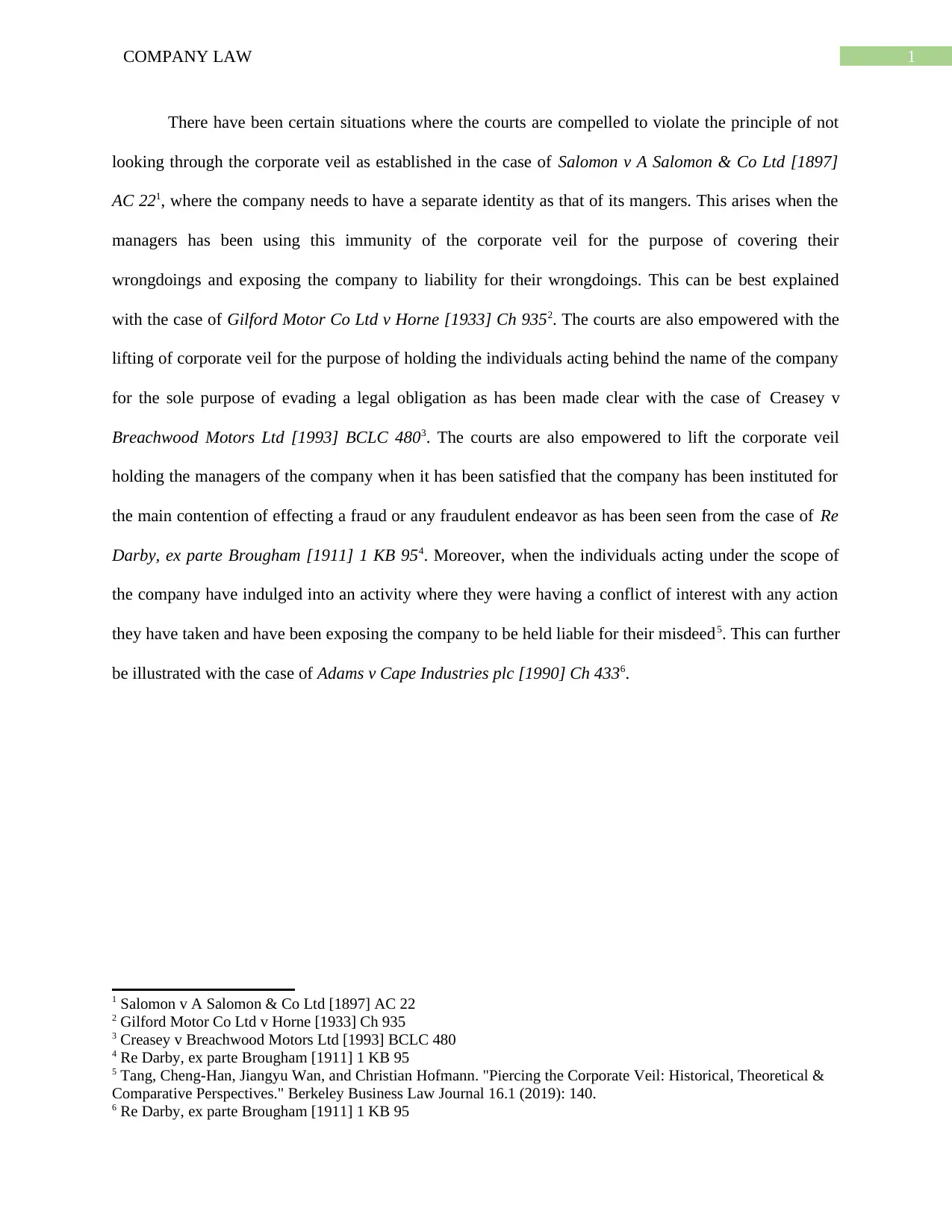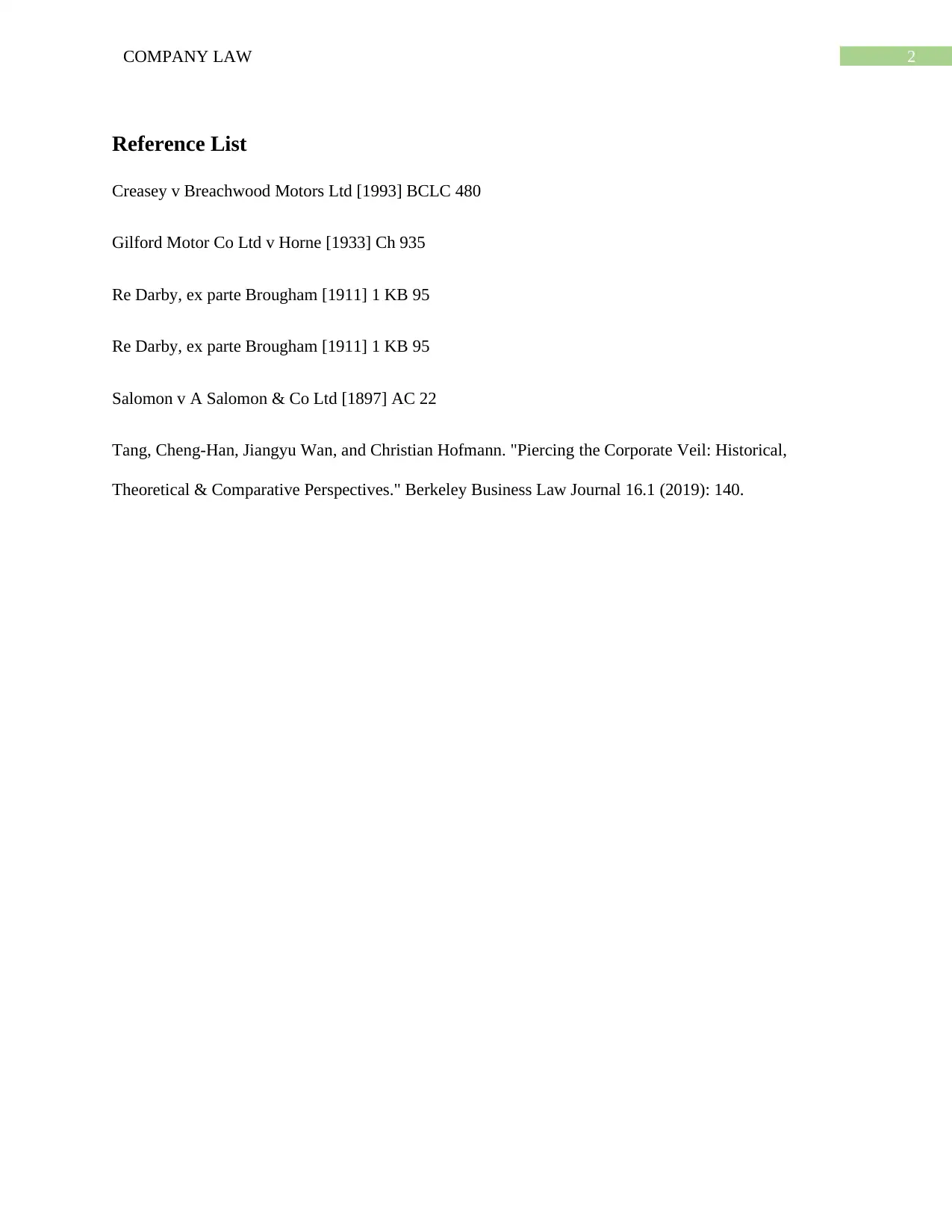Company Law: Analysis of UK Court Decisions on Lifting Corporate Veil
VerifiedAdded on 2022/12/18
|3
|502
|1
Case Study
AI Summary
This case study examines the circumstances under which UK courts lift the corporate veil, focusing on key legal precedents. The assignment begins by outlining the general principle established in Salomon v A Salomon & Co Ltd, where a company is treated as a separate legal entity from its owners. However, the study then explores the exceptions to this principle, detailing instances where courts disregard the corporate structure. These include situations where the corporate veil is used to perpetrate fraud or evade legal obligations, as seen in cases such as Gilford Motor Co Ltd v Horne and Creasey v Breachwood Motors Ltd. Furthermore, the analysis includes Re Darby, ex parte Brougham, which highlights situations involving fraudulent activities. Finally, the study addresses situations where the company's managers have a conflict of interest, potentially exposing the company to liability, as illustrated by Adams v Cape Industries plc. The study utilizes only UK case laws to provide a comprehensive understanding of the topic.
1 out of 3










![[object Object]](/_next/static/media/star-bottom.7253800d.svg)